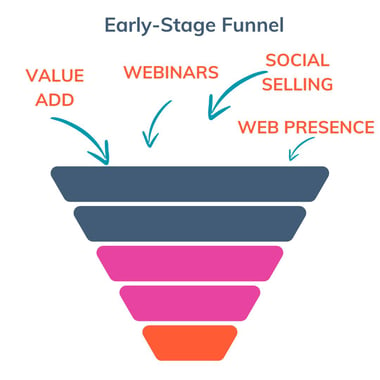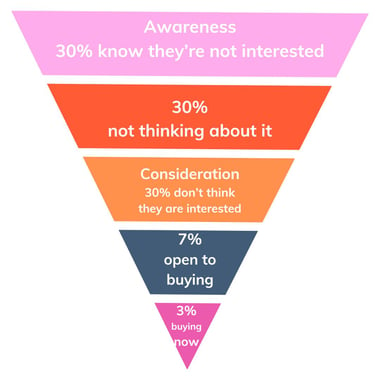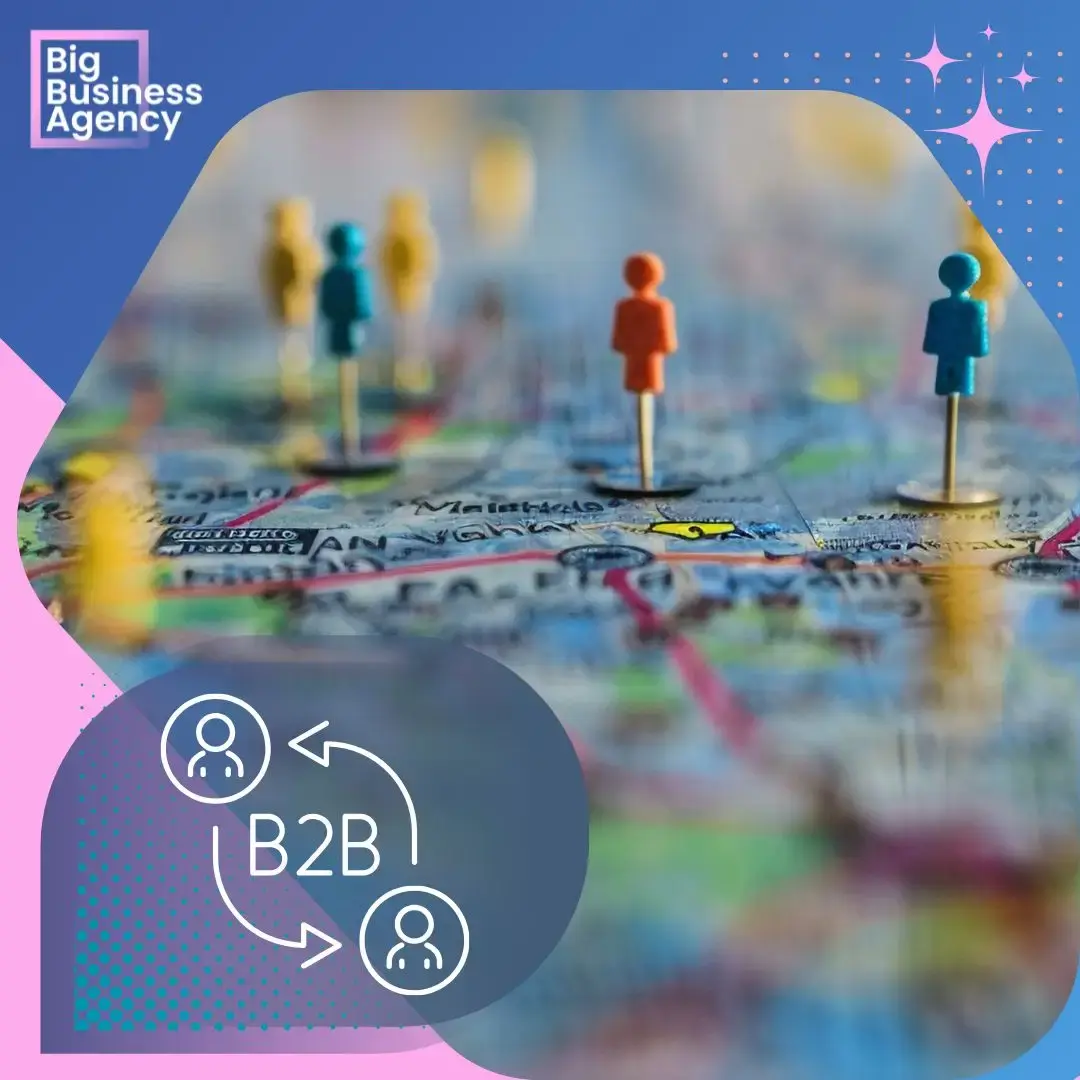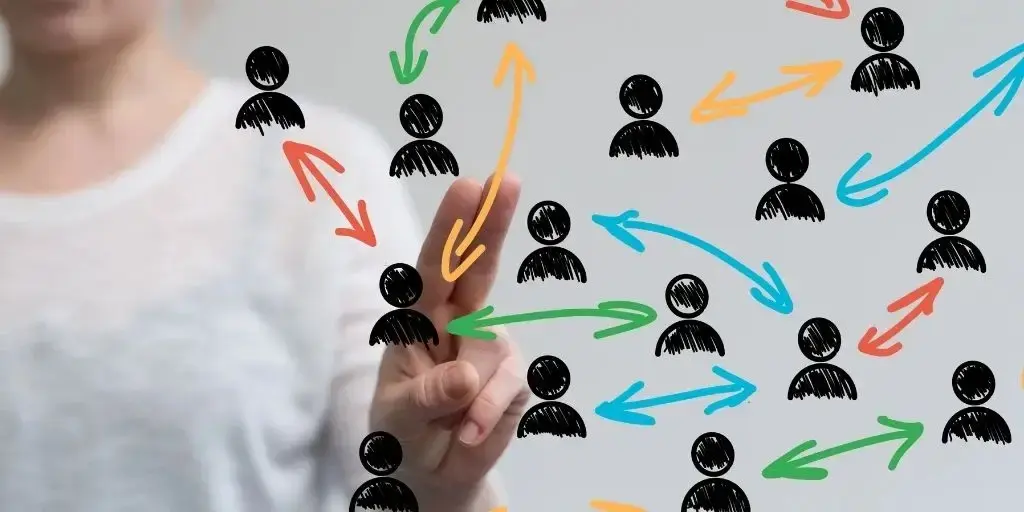Aligning your pipeline with the buyer's journey - is it a good idea?
Aligning your sales pipeline with a sales view of your buyer's journey is a smart move. Seriously, it's a no-brainer. Especially for B2B Sales...

The core principle of the Buyers Pyramid emphasises that, at any given time, merely 3% of your potential market is actively prepared to make a purchase.
This insight is invaluable to anyone involved in sales and growing a business. It helps us focus on qualification and finding those customers that are ready to buy.
A study by Campaign Monitor found that businesses that segment their target audience using models like the Buyers Pyramid can achieve up to 760% increase in revenue. This staggering statistic underscores the importance of understanding where potential customers are in their buyers journey.
By customising your sales and marketing strategies for each segment of the pyramid, you can more effectively engage with prospects, nurture leads and ultimately drive more sales.
The Buyers Pyramid is an invaluable tool for resilience against the frequent fluctuations in sales, providing context and perspective for our sales efforts. It also clearly illustrates the need to communicate differently with each group, as they are all at various stages of the buyer's journey.
That's why the "Buyers Pyramid" is as relevant today as when it was first developed all those years ago by renowned business strategist, Chet Holmes.


The Buyers Pyramid is a really useful tool for visualising the market potential for a specific product or service. It outlines the various stages a customer may be in.
It highlights the opportunities for attracting clients.
Chet Holmes developed this structured pyramid to categorise potential buyers based on their readiness to make a purchase. This enables businesses to tailor their marketing messages for maximum effectiveness.
Let's take a look at each section of the pyramid-
1. Group 1 at the very top of the pyramid are the 3% of buyers who are 'ready to buy' right away. They have identified a need, done their research, and are actively searching for a solution.
2. Group 2 are potential customers are open to exploring purchasing options but may not be actively seeking them. They are receptive to your message, and with the right approach, they could easily convert into customers.
This group are the 7% who are currently in the phase of seeking information rather than considering a purchase. They are open to the concept but require additional details before reaching a decision.
3. Group 3 - this group currently don't have purchasing your products or services on their agenda. That could simply be a timing issue. It's certainly worth exploring if they do in fact have a problem your solution can solve.
4. Group 4 may not currently see the value in the product or service offered. However, with the right approach or a shift in their circumstances, they could potentially become valuable customers in the future.
5. The bottom 30%: Some individuals in this segment may not currently see the value in the product or service offered. Obviously not everyone will be your target audience, no matter how exceptional your offering may be. This is the group you are most likely to qualify out. Don't get caught spending too much time on these contacts.
 Understanding the response of each level in the Buyers Pyramid is key to effectively winning more customers.
Understanding the response of each level in the Buyers Pyramid is key to effectively winning more customers.
To illustrate this concept, I'll use an IT Services company in my example...
Group one - the top 3% of prospects are ecstatic that you can provide Managed Services and give them an SLA that meets their needs. They hire you immediately!!
Group two - the next 7% are interested in hiring an IT Services company. To date, they haven’t had time to investigate their options, but they snap up your offer.
Group three can be persuaded that their company would benefit from hiring your IT Services company. The contracts may take some time to get over the line as negotiations are protracted.
Group four - a second group of 30% who do not realise they could use your IT Services company to address their network reliability problems and to give them secure remote access. They don't know how many of their IT problems you can really solve or what's involved in solving their IT problems until you explain it to them.
Group five - the bottom 30% probably won't see the value in your IT Services as they already have an in-house IT department responsible for handling the same tasks your company offers.
Book a 30 minute (free) consultation and discover how we tap the potential of the Buyers Pyramid to achieve more effective prospecting and how to adjust your sales outreach to get better results
Early-stage prospects may move through your funnel and become customers if your products and services are a good fit and they see value in your offer.
This might happen faster if your messaging resonates with the challenges they are currently grappling with.
The following is a selection of ways you can attract more prospects into your early-stage funnel.

Consider hosting an engaging business event for your target audience and customers in the form of a webinar. An event designed to engage your audience with interactive exercises, valuable content, and networking opportunities, all aimed at boosting your brand's visibility, converting leads into paying customers and ultimately increasing revenue.
Webinars are ideal if you want to deliver an online video presentation, workshop, or demo. Webinars can be live or pre-recorded, but they should always include interactive elements that allow viewers to participate, ask questions, and engage with the presenters.
Use your webinar as a platform to drive conversions and revenue. Position yourself as a thought leader to establish trust with prospects and effectively promote your product or service. By sharing and promoting your webinar, you can enhance brand awareness and drive more conversations and more conversions.
When hosting webinars, you have the flexibility to tailor the format to align with your goals and desired outcomes. Popular formats include:
Enhance your outreach activities with webinars to engage your audience, showcase your expertise, and drive meaningful results for your business using one or a combination of these formats.
![]() Engage in Social Selling to target potential business prospects on social media and establish connections that lead to valuable leads. This modern approach to B2B Sales focuses on building relationships and nurturing connections rather than traditional sales tactics.
Engage in Social Selling to target potential business prospects on social media and establish connections that lead to valuable leads. This modern approach to B2B Sales focuses on building relationships and nurturing connections rather than traditional sales tactics.
Social selling takes time but with the vast number of social media users, the potential for generating sales through these platforms is immense.
One significant challenge with social selling lies in its time-consuming nature. Tools like Expandi which automate LinkedIn prospecting, are essential for serious social sellers looking to boost productivity and increase the early funnel pipeline.
When making a decision, potential customers are on the lookout for value. By providing this value upfront, even before a client commits, you are showcasing that your company is the right choice for them.
This added value should be substantial without revealing all your trade secrets or taking too much time to produce.
For instance, if you follow a proven "3-step process" to deliver a captivating presentation, offering companies the first couple of steps can be a fantastic way to demonstrate value and start building a relationship with them.
Offering samples or a free trial period can be a highly effective strategy to attract potential customers and demonstrate the value of your product or service.
By providing a no-cost, low risk opportunity to experience what you offer, you lower the barrier to entry and allow prospects to see firsthand how your solution can meet their needs. This approach builds trust and reduces the perceived risk associated with making a purchase.
For instance, a software company might offer a 30-day free trial of their premium features, allowing users to explore the full capabilities of the product without any financial commitment.
Similarly, a skincare brand could provide sample-sized versions of their best-selling products, giving customers a chance to test the effectiveness and quality before deciding to buy the full-sized versions.
During the trial period, it's crucial to engage with the users, offering support and guidance to ensure they get the most out of the experience.
This can include onboarding emails, tutorial videos and easy access to customer service. By doing so, you not only enhance their experience but also increase the likelihood of conversion once the trial period ends.
Establishing a strong web presence boosts the chances of your company being discovered. Whether through engaging blog content, podcasts or social media platforms.
Furthermore, your web presence can act as the starting point of a buyer's journey. By providing valuable content you can efficiently guide potential leads through the next steps. It becomes even more effective when you can automate some of these processes, saving time and effort on individual customer interactions.
 HubSpot Content Hub is a modern content management system that enables you to very easily create dynamic website pages (and landing pages) for every visitor - optimised for conversion across every device and unlike other options you don't need to have any technical skills.
HubSpot Content Hub is a modern content management system that enables you to very easily create dynamic website pages (and landing pages) for every visitor - optimised for conversion across every device and unlike other options you don't need to have any technical skills.
You can get your site up and running with a user-friendly interface and publish content at scale with the help of AI-driven tools. It's easy for sales and marketing teams to build landing pages, create and publish updates, offers and promotions without the need for technical support.
Features like content remix (to reproduce content for social media) and AI tools like image generator and blog writer give you productivity gains as well as compelling content without needing any specialist or technical knowledge.

Using Intent Data to identify where prospects are in the buyer’s journey makes things easier than ever to reach the prospects that are ready to buy.
When using intent data to pinpoint where prospects are in their journey, it's really important to strategically choose which intent topics or keywords to monitor. B2B marketing and sales teams are often too hasty when it comes to selecting these topics or keywords and then focus on accounts that show increased interest in a few of these terms.
Although this approach might ensure attention on in-market accounts, it can squander a significant part of intent data's potential: its power to reveal a prospect's journey stage, enabling you to tailor your tactics and messages for each in-market account effectively.
By examining the intent signals from your target accounts regarding specific topics or keywords, you can determine their position in the buying cycle.
It is generally safe to assume that prospects at the beginning of their buyer's journey are not yet familiar with your solution or brand, unless you are a well-known company with significant market share. In this early stage, prospects are typically focused on understanding their issues and exploring potential solutions.
Therefore, intent data signals will likely increase around topics or keywords related to the general challenges and pain points experienced by your prospective customers, as well as the broad solutions your products or services provide.
For instance, if you are promoting a Sales Training Program designed to enhance the knowledge and skills of salespeople potential customers in the early stages of their buyer's journey may show increased interest in topics or keywords such as "online training," "professional development," "training and development," and "training materials and methods."
These terms are not specific to any product category but address general needs, indicating that these prospects are just beginning their research into possible solutions.
By this stage, prospects have likely identified why they’re having problems. Now they’re focused on finding solutions. This means the intent data will show a greater level of activity around topics/keywords related to specific product/service categories.
Continuing with our Sales Training Program example, you may see a lot of activity around keywords similar to: “Instructor-Led Training (ILT),” “eLearning,” “Optional Practical Training (OPT),” and, “Learning Experience Platform.”
Tools such as Clearbit are designed to enhance your prospecting efforts by providing detailed insights about potential leads.
Let's be clear about why intent data matters, as a salesperson would you prefer to have a conversation with someone unfamiliar with your brand or engage with a person who visited your pricing page just five minutes ago?
Identifying the right person at the right time with the right message is nirvana for successful personalised outreach. The great news is Clearbit is now available as Breeze Intelligence, part of HubSpot, making it easier than ever before to get more traction with your prospecting efforts.
Understanding these unique buyer segments opens up opportunities for targeted SEO initiatives. Here are some ways you can tailor your content for each group:

According to basic statistics, around 6 out of 10 cold calls typically result in objections or rejections. Following this logic, a successful salesperson should aim for one meeting booked out of every 10 conversations held.
Your prospecting will benefit from accepting that only 1/10 are willing to book a meeting right now, but the other 9/10 prospects are certainly worth nurturing.
With value-adding content, education on the problem you solve and a change in circumstances, there is a segment of 30% that has the potential to convert at a later date so why not nurture them instead of ignoring them? Having automation tools and smart workflows is critical to make your outreach more effective and more successful over time.
With systems in place to capture, monitor and manage all your outreach activities, it really is very easy to nurture your pipeline and for example, see who booked a meeting in the past few months but did not proceed. These leads are worth revisiting as their previous objections may have been around timing.
This approach to nurturing prospects extracts additional value from your valuable lists, as even highly targeted lists often include companies outside the top 3% - buying now group. It's evident that nurturing your valuable list is essential and something we all should make time for.
This targeted approach not only maximises your marketing ROI but also ensures that your messaging resonates with the specific needs and readiness of each group, leading to more meaningful and profitable customer relationships.
Got questions?
For more information about Big Business Agency's scalable, cost-effective sales and customer service automation and workflows, explore our services or book a free demo
Tune in now to a ward winning Unicorny Podcast with our Head Honcho, Peter Russell-Smith where he joins Podcast Host Dom Hawes talking about profitable growth in a challenging market, "pin your ears back and get your notebooks out" for a cracking podcast!
Sales Consulting Services are a valuable resource for businesses looking to boost their sales and maximise profits.
Our skilled sales professionals with market expertise and strategic know-how collaborate closely with your team to evaluate your current status, pinpoint areas for enhancement and offer tailored strategies for sales growth.
Covering Sales Strategy, Sales Process, Sales Performance and specialising in Big Deal Pursuits, whatever your B2B sales concerns are, we are here to help.
From Google Ads and PPC Campaigns, Go To Market Strategy, defining Ideal Customer Profile, or a Pricing and Packaging review, we guide you on what to do and how to do it.
Learn about our transformative
The buyers pyramid helps businesses identify their target audience more effectively by categorising potential customers into different levels of readiness to purchase.
This segmentation allows companies to tailor their marketing efforts to each group, ensuring that messages resonate with the right people at the right time.
The key stages of the buyers pyramid are:
Top: Ready to buy now
Middle: Open to buying but need more information
Bottom: Not interested or not aware of the product
Companies can maximise sales by focusing immediate efforts on the top tier, nurturing the middle tier with informative content, and raising awareness among the bottom tier through broad marketing campaigns.
Understanding the buyers pyramid can improve a company's marketing strategies by enabling more precise targeting and resource allocation.
By recognising where potential customers are in their buying journey, businesses can craft personalised messages, optimise ad spend, and create content that moves prospects through the pyramid more efficiently.
Businesses can use the buyers pyramid to enhance customer retention and loyalty by continuously engaging customers at every stage.
For those ready to buy, providing exceptional service and follow-up can turn them into repeat buyers.
For those in the middle, offering valuable information and support can build trust.
For the bottom tier, maintaining brand presence ensures they think of your company when they are ready to purchase.

How to prospect new B2B clients
Aligning the pipeline with a sales view of the buyer's journey
What are the top internal barriers to growth?
Winning Large Enterprise Deals: The Sales Playbook
What is an Ideal Customer Profile?
How to Choose the right B2B eCommerce CRM
Elevating Customer Service: Unlocking the Secrets to Top Quality Service

Aligning your sales pipeline with a sales view of your buyer's journey is a smart move. Seriously, it's a no-brainer. Especially for B2B Sales...

6 min read
McKinsey discusses the Customer Decision Journey, noting that B2B companies using this view of the journey boost sales by an average of 5 -10...

4 min read
Full-cycle sales model: Why it's so much better for customers